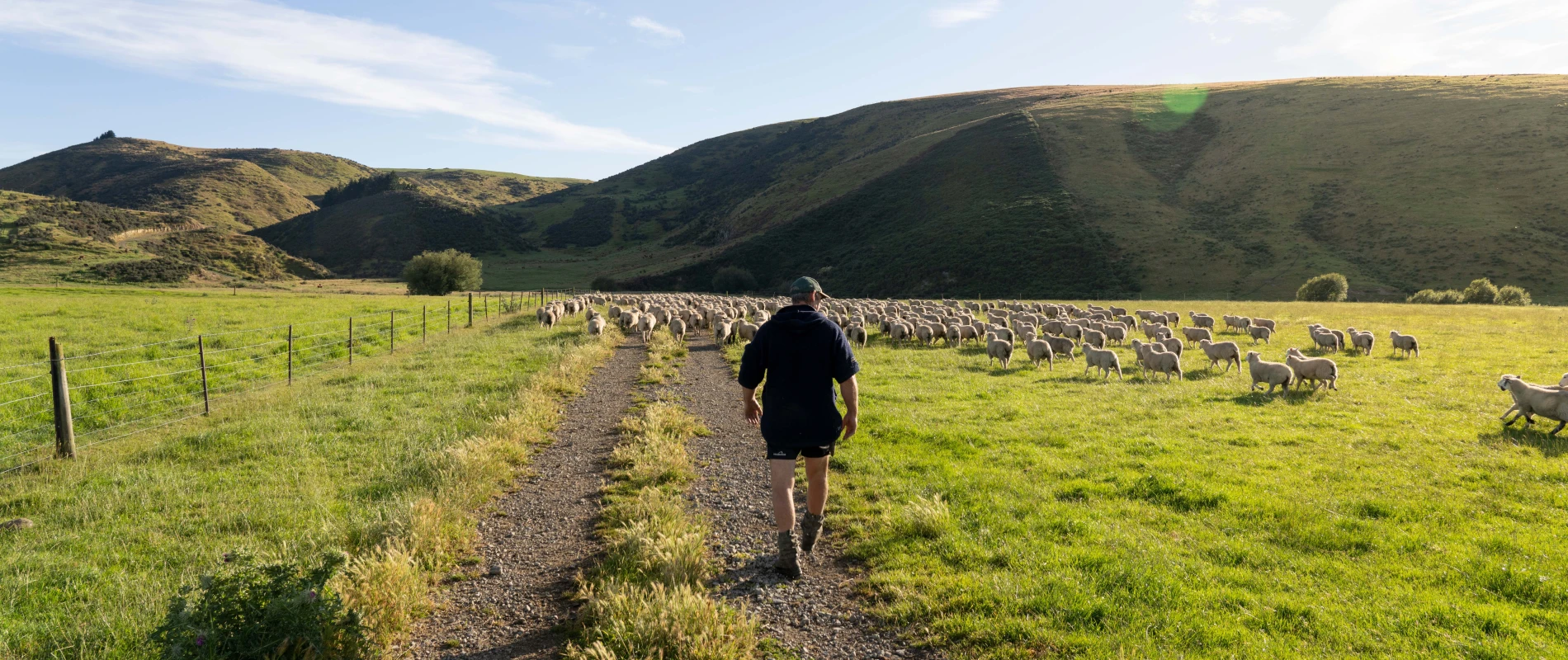
Pure green paddocks
Working alongside mother nature and taking direction from both the land and the lamb is a testament to why New Zealand farmers end up with such a beautiful product. And it makes the job of our Maimoa livestock representatives so much easier when handpicking the lamb because it’s such a premium quality already.
For this article we had a chat with Harley Davies from Gawler Downs who’s been farming his property for more than 23 years. With his wife Neroli, their 1187ha property is an ideal balance of hills and flat land. It comprises 600ha of native tussock, 200ha of developed hill country and the rest is flat. The hills have been subdivided into about 50 paddocks varying in size from 10ha to 30ha. The balance of farming not just lamb but also the soil and grass within these paddocks is crucial to achieving the premium product of lamb handpicked for Maimoa, he says “You can’t do one without the other. It all comes down to how much feed you’ve got in front of you really”. It is this care from our farmers that sets our meat apart from the world. Grown with integrity and care guaranteeing a deliciously tender, mouth-watering result in every pack. They start with the best grasses so we get the best lamb.
When asked about regenerative farming Harley (also calls himself pure green Harley - makes sense given his beautifully green paddocks), made it very clear and simple. “We look after our soil, the plants in the soil and they look after the stock. It’s this full circle of what I like to call ‘grass to table farming practice’ that produces this beautiful meat. If you manage it well it will treat you right.”
Most of Harley’s lambs are born and raised on lucerne; a legume plant similar to clover also known as alfalfa. Lucerne is known for its high feed value and fast growth rates. A perennial feed option that has come full circle because of its reliability and endurance for grazing rotations especially in high country because of its drought tolerance. As Harley says, its good on dry land and high in protein with tap roots that go down about a metre. It’s this root system that puts all the good stuff back into the soil and increases the nitrogen levels for subsequent crops, but also makes it a fantastic feed option for the lamb. With the right treatment Harley says he should be able to maintain the living root of his lucerne paddocks for 10-12 years with minimal irrigation. “Nature just loves it,” he says. And, it is this care for soil health and in turn grass that makes for a harmony for farming lamb.
But it all comes back to how the paddocks are managed. For regenerative lamb farming to exist, management skills in stock rotation is crucial. Harley runs off a 26–27-day grazing rotation. Within this rotation a blue print of sorts is created to plan out where the lamb mobs will be moved and placed within that period, making their way around all paddocks and eventually returning to where they began. This is to get the best out of the land and the lamb. Harley’s mobs have to be shifted every 4-5 days to keep both the soil, the plants and the lambs happy.
“If a paddock gets away from us, we’ll shut it off, let it grow back before bringing it back into the rotation again,” says Harley.
For a lamb farmer it’s all about thinking ahead. Whether its lambing season or drafting for sale planning the movements of mobs are crucial in farming lamb this way. It is this care for the lambs and land that allows for a delicious result. Harley’s lambs are sitting with a GR of between 6-8; there’s no denying these lambs are farmed to perfection.
When asked why New Zealand lamb and its farmers are producing such a beautiful product, Harley says it all comes back to caring for both the land and the lamb. “Its natural and people care about their stock.”
It’s this level of care and expertise in managing stock rotation that makes for a delicious grass-fed meat we all love sinking out teeth into. Thanks Harley and all the other Maimoa lamb farmers out there, you’re truly inspirational and it shows in the premium beautiful meat we get in every pack.
You put the best in so we get the best out.